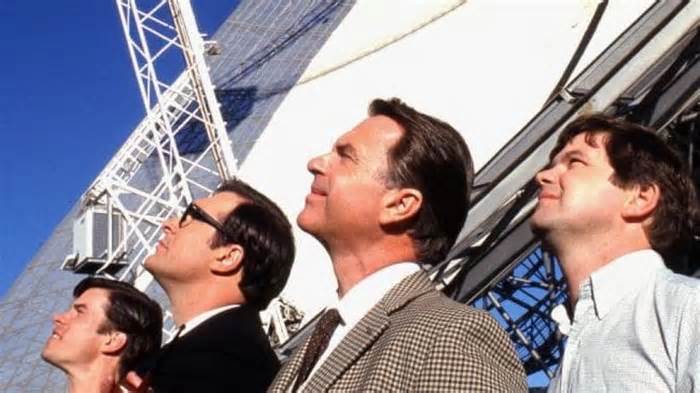Australia’s top radio telescope and the center of Australian comedy, The Dish, has been added to the national heritage list for decades after helping humans land on the moon.
CSIRO’s Parkes Observatory, colloquially known as The Dish, will be the 118th access on the National Heritage List, joining the ranks of Australia’s iconic top attractions, adding the Great Barrier Reef and the Sydney Opera House.
Federal Environment Minister Sussan Ley announced that adding the dish to the list would contribute to the achievements of the country’s greatest achievements in science and engineering.
“The role of the Parkes Observatory as a floor station (along with NASA’s site at Honeysuckle Creek) in the moon landing of the 1969 Apollo 11 project for a world of 530 million people, presents a global Australian technical and clinical generation design, “Law said in a press release.
“Along the way, he highlighted the role of rural Australia and its contribution to clinical discovery.”
– CSIRO_ATNF (@CSIRO_ATNF) 10 August 2020
The dish, located in Parkes in the north-central new-west of New South Wales, began operating in 1961, according to the CSIRO, and measures 64 meters in diameter. He is best known for his role in assisting NASA in its efforts to bring humans to the Moon. During the Apollo 11 mission of 1969, The Dish obtained voice and video signals from the first men on the moon, Neil Armstrong and Buzz Aldrin, and helped spread it around the world.
Despite its antiquity, the radio telescope has gained a number of innovations over the decades and continues to serve as one of the 3 main antennas used through the Australian National Telescope Facility. In fact, he is guilty of detecting some of the more than 2,000 known pulsars: fast-rotating neutron stars.
In 2000, celebrated Australian comedian Rob Sitch released a film in his honor, the story takes some liberties.
While the Dish’s Parkes team played a key role in NASA’s Apollo 11 mission, as the film shows, it is not the only Australian facility to support.
The CSIRO provided a practical breakdown of the artistic narrative of the occasions in Sam Neill’s film, adding the omission of paintings transmitted through NASA’s Honeysuckle Creek near Canberra, as well as other amenities across the country.
Unfortunately, the real Parkes team also did not play a cricket game in The Dish as the galahs group in the film.

